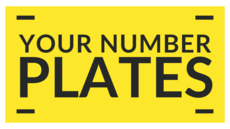1. Introduction – The Surge in 4D Plate Popularity Among Riders
Motorcyclists have long sought ways to personalise their machines, from custom paintwork to unique accessories. In recent years, 4D number plates have emerged as a popular choice, offering a bold, dimensional look that instantly distinguishes a bike on the road.
2. Understanding What 4D Plates Are
4D plates feature laser-cut acrylic characters bonded onto the plate’s surface, producing a crisp, raised effect. This design gives depth and sharpness that traditional flat plates lack, creating a more premium appearance.
3. How 4D Plates Differ from 2D and 3D Designs
Unlike 2D plates, which are printed flat, or 3D plates, which use gel resin to create rounded lettering, 4D plates have block-like characters with clean edges. The result is a sharper, more defined look with strong visual contrast.
4. Materials Used in Manufacturing 4D Plates for Bikes
High-quality 4D plates are typically made with tough acrylic characters mounted on a durable acrylic or aluminium base. The adhesives used are weather-resistant, ensuring the raised characters remain firmly in place.
5. The Appeal – Why Riders Choose 4D Plates
For many riders, 4D plates are a statement. They blend aesthetics with individuality, enhancing a bike’s style without major modifications. The tactile, raised characters also give a sense of craftsmanship that flat designs lack.
6. Legal Status of 4D Plates in the UK
4D plates are legal in the UK, provided they meet all DVLA requirements for size, font, spacing, and reflectivity. Non-compliance with any element of the standard can make them illegal for road use.
7. DVLA Regulations for Motorcycle Number Plates
Motorcycle plates must display black characters on a yellow reflective background. They cannot have decorative elements that obscure legibility, and must include the supplier’s name and the BS AU 145e mark.
8. Size and Dimension Rules Specific to Bikes
UK regulations require motorcycle plates to be smaller than car plates, usually 228mm x 178mm for standard bikes. Each character must be 64mm tall and 44mm wide, with specific stroke widths and spacing.
9. Font and Character Style Requirements
The Charles Wright typeface is mandatory for all road-legal plates. Stylised fonts, italics, or modified letter shapes are not permitted, even if the plate is otherwise compliant.
10. Reflectivity and Background Colour Standards
Rear bike plates must be retroreflective with a yellow background to ensure visibility in low light. The characters themselves must not be reflective, as glare can hinder readability.
11. Mounting and Positioning on Motorcycles
Plates must be securely fixed and positioned vertically or nearly vertical, in a clearly visible location at the rear of the bike. Angled or tucked-in plates risk non-compliance and reduced visibility.
12. Potential Compliance Issues and Common Mistakes
Common errors include incorrect spacing, oversized or undersized characters, and missing British Standard markings. Some riders also mistakenly choose tinted backgrounds, which are illegal for road use.
13. Durability and Weather Resistance Considerations
Motorcycles expose plates to intense weathering—from rain and grit to high-speed wind. Quality 4D plates are UV-stable, scratch-resistant, and bonded with adhesives that withstand vibration and temperature extremes.
14. Cleaning and Maintenance for Longevity
Routine cleaning with mild soap and water keeps 4D plates looking sharp. Abrasive cleaners should be avoided to prevent scratching the acrylic characters or dulling the reflective background.
15. Where to Buy DVLA-Compliant 4D Bike Plates
Only DVLA-registered suppliers can issue legal plates. Buyers should check supplier credentials and request confirmation of compliance before purchasing.
16. Cost Factors – From Budget to Premium Options
Prices vary depending on materials, manufacturing precision, and customisation. While budget plates may be tempting, premium options often offer better durability and weather resistance.
17. Risks of Using Non-Compliant 4D Plates
Illegal plates can result in fines up to £1,000, MOT failure, and potential vehicle seizure. ANPR cameras may also fail to recognise non-compliant plates, attracting law enforcement attention.
18. Conclusion – Style with Legal Peace of Mind
4D plates offer a striking way to personalise a motorcycle, blending bold design with modern craftsmanship. By ensuring compliance with DVLA standards, riders can enjoy the best of both worlds—style and legality—without risking penalties.

